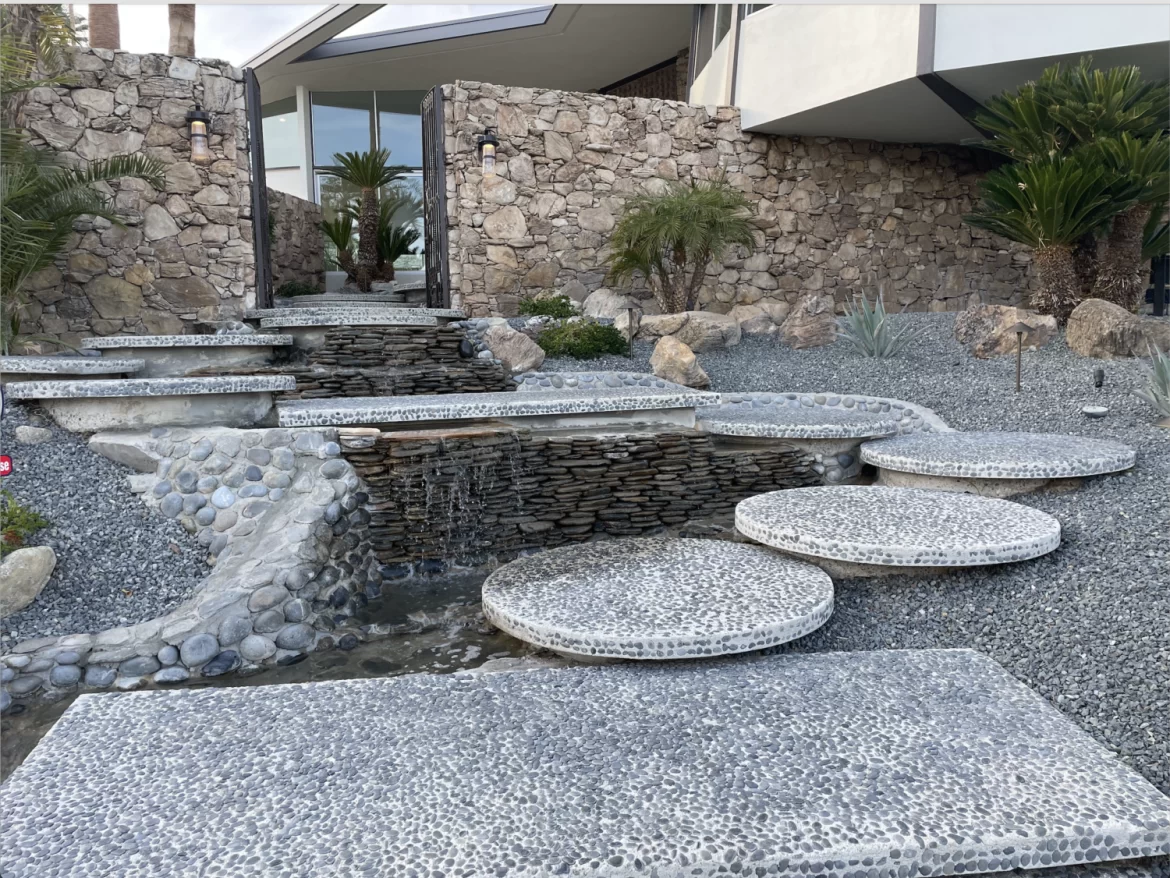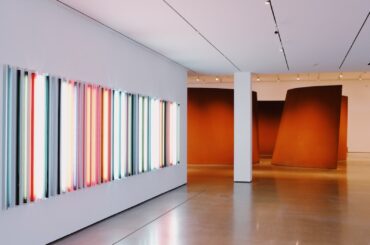For many years, it was referred to as the Pleasure Dome, the Alexander Mansion, Elvis and Priscilla Presley’s Honeymoon Hideaway, and a tacky unofficial Elvis Museum. The famous Palm Springs mid-century architect William Krisel built the historic site. It has been brought back to its former grandeur and opened its huge doors to the public for Modernism Week.
In 1960, Krisel made a group of four circular pods that fit together for Helene and Robert Alexander of the Alexander Building Company. Because circles have no corners, he did this with the reasoning that “you can approach them from anywhere.” Dan Bridge and his colleagues at ABSea Development have painstakingly repaired the terrazzo flooring, windows, ceiling-mounted fireplaces, and the circular sofa in the living room.
Because circles have no corners, he did this with the reasoning that “you can approach them from anywhere.” Dan Bridge and his colleagues at ABSea Development have painstakingly repaired the terrazzo flooring, windows, ceiling-mounted fireplaces, and the circular sofa in the living room.
Anything that can be seen from the outside of the structure, such as the windows, roof, paint, hardscape, and landscape, must seem original because the local historic board has control over this area. Bridge and his team spent a lot of time in the Krisel library at the Getty Center looking for original mid-century designs to copy.
On a tour of the residence, Bridge remarked to L.A. Weekly, “We touched everything in this place. “The walls were smooth coated, the wiring, the sewer lines, and the 60-year-old roof were all redone. Compared to when we first purchased it, the kitchen now resembles its original design more. The 1980s tiling that was there has been replaced with gas burners and porcelain slab counters. The bathrooms have been updated and are now modern. We made an effort to adhere to the House of Tomorrow’s aesthetic.
The 69 windows in the building needed to be replaced, particularly the famous canted angle windows that are seen from the master bedroom.
“Choose a manufacturer who will make a window that is 2.5 inches narrower at the top than at the bottom,” Bridge said. Throughout the entire house, each and every one of them is personalised. They were produced by a national company, and they were put in by a regional one.
Inside four 12-sided polygons, there are four living areas: the living and dining rooms, the master bedroom and bathroom, the family room and service area, and the children’s and guests’ quarters. The four points, or two facing 45-degree triangles, are where the four 30-degree angled dodecagons lie. Inner triangles consist of rooms and halls that connect four major sections. Three of the living spaces have enormous circular corners, and the pool’s shape resembles the ceiling, giving the space an ascending aspect.
Robert Alexander, the first owner, is a hero in his own right in the area. He collaborated with Krisel on various projects and developed the first contemporary subdivision in Palm Springs, Twin Palms, as well as the Ocotillo Lodge Hotel and other residences in the Old Las Palmas neighborhood, including the Lawford/Kennedy House. As the house and family were highlighted in an eight-page photo in a 1962 issue of Life Magazine, the House of Tomorrow gained notoriety. Elvis Presley rented out the house in 1967 for his and Priscilla Presley’s hhoneymoon. isa Marie was born exactly nine months later.
Bridge would not say how much the 21-month project had cost in total, but he could say that it had cost $1 million more than he had anticipated.



